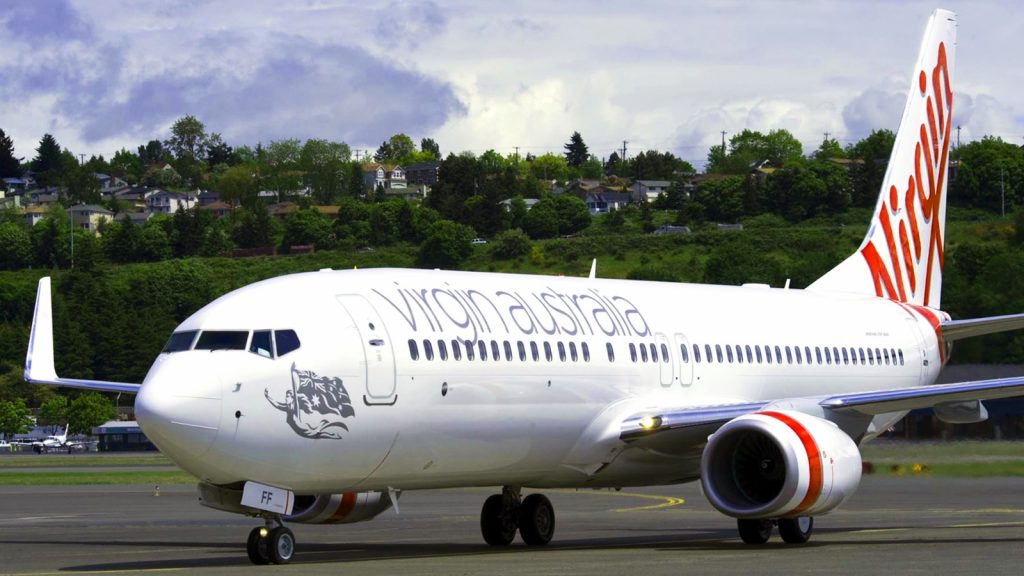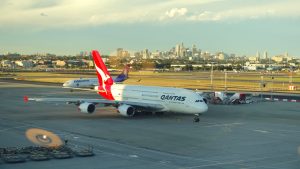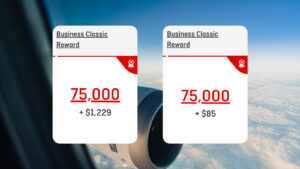Virgin Australia recently announced that the surcharges applicable to Velocity award seats booked with points will increase from 8 January 2020. You can read the full story here.
There are increases of up to 185% on all routes except for Los Angeles. While that may sound scary, in real life that percentage is worked out from a $3.50 charge increasing to $10 in domestic Economy. Other big increase affects flights to Hong Kong in Business Class, going from $50 to $98.
With this in mind, the purpose of this article is to compare Virgin’s new carrier charges with Qantas, to see how they now compare.
Domestic and Trans-Tasman Flights
With the new changes, Virgin Australia’s surcharges are now equal with Qantas’ for domestic flights and those between New Zealand and Australia.
| Carrier surcharge (return) | Virgin Australia (from 2020) | Qantas (current) |
|---|---|---|
| Economy | $28 | $28 |
| Business | $28 | $28 |
Here are the points required with both Virgin Australia and Qantas. While they are on par for Economy, Qantas’ increases to Business Class redemptions make them considerably costlier than Virgin.
| Virgin Australia (current) | Qantas (current) | |||
|---|---|---|---|---|
| Economy | Business | Economy | Business | |
| 0-600 miles (e.g. Sydney-Melbourne) | 7,800 pts | 15,500 pts | 8,000 pts | 18,400 pts |
| 601-1,201 miles (e.g. Melbourne-Brisbane) | 11,800 pts | 23,500 pts | 12,000 pts | 27,600 pts |
| 1,201-2,401 miles (e.g. Sydney-Perth, Sydney-Auckland) | 17,800 pts | 35,500 pts | 18,000 pts | 41,500 pts |
Short-haul International Flights
Virgin Australia defines flights around South-East Asia and the Pacific Islands as Short-haul international. This includes destinations like Fiji and Bali Denpasar.
| Carrier surcharge (return) | Virgin Australia (from 2020) | Qantas (current) |
|---|---|---|
| Economy | $70 | $70 |
| Business | $140 | $210 |
Their surcharges are equal in Economy, but Virgin Australia’s carrier charges are still lower than Qantas’ after the 2020 change (the QF figure is based on Sydney-Denpasar flights).
Here are the points required with both Virgin Australia and Qantas for flights to Fiji or Bali.
| Virgin Australia (current) | Qantas (current) | |||
|---|---|---|---|---|
| 1,201-2,401 miles (e.g. Sydney-Nadi [Fiji]) | 17,800 pts | 35,500 pts | 18,000 pts | 41,500 pts |
| 2,401-3,601 miles (e.g. Sydney-Denpasar [Bali]) | 22,300 pts | 49,500 pts | 20,300 pts | 57,000 pts |
Velocity Points offer greater value for all flight redemptions except for Economy to Bali. Since Qantas has reduced the points needed for longer Economy redemptions, they now have better pricing overall.
Long-haul International Flights – Hong Kong
One of Virgin Australia and Qantas’ main destinations in Asia is Hong Kong, which is subject to the largest increase with Virgin Australia’s surcharges.
| Carrier surcharge (return) | Virgin Australia (from 2020) | Qantas (current) |
|---|---|---|
| Economy | $90 | $90 |
| Business | $196 | $110 |
Virgin’s Business Class surcharge is considerably higher than Qantas’ now, although Economy is now the same across both airlines.
Here are the points required with both Virgin Australia and Qantas flights to Hong Kong.
| Virgin Australia (current) | Qantas (current) | |||
|---|---|---|---|---|
| Economy | Business | Economy | Business | |
| 3,601-4,800 miles (e.g. Melbourne - Hong Kong) | 27,800 pts | 59,500 pts | 25,200 pts | 68,400 pts |
Qantas is now better for Economy redemptions while Virgin Australia remains the best choice for Business Class in terms of points needed.
Long-haul International Flights – Los Angeles
Another destination that Virgin Australia and Qantas share is Los Angeles, a major gateway into the USA from Australia. These surcharges won’t change this time.
| Carrier surcharge (return) | Virgin Australia (current) | Qantas (current) |
|---|---|---|
| Economy | $120 | $120 |
| Premium | $290 | $330 |
| Business | $460 | $430 |
It’s quite evenly matched here. They are once again identical in Economy, Virgin is cheaper than Qantas for Premium Economy, while it’s the other way around for Business Class.
Here are the points required with both Virgin Australia and Qantas flights to Los Angeles.
| Virgin Australia (current) | Qantas (current) | |||
|---|---|---|---|---|
| Economy | Business | Economy | Business | |
| 7,001-8,400 miles (e.g. Brisbane - Los Angeles) | 48,800 pts | 95,500 pts | 41,900 pts | 108,400 pts |
| * VA Premium Economy needs 71,700 points and QF Premium Economy needs 81,300 points | ||||
The differences in Economy and Business Class pricing is even more evident for longer flights, as Qantas requires fewer points for Economy, while Virgin Australia is asking for nearly 13,000 fewer points for Business Class.
Summing up
While Virgin Australia’s changes aren’t passenger-friendly, I understand the context in which they need to raise more funds in order for the Velocity program to remain viable. At the end of the day, these changes are modest and shouldn’t ruin anyone’s redemption plans for now.
It’s important to remember that carrier surcharges exist only to benefit the airline. You still need to pay other airport taxes on top of your fare, as usual. If you wanted to avoid these charges, consider using your points to book with partner airlines that don’t charge carrier fees.
Virgin is still competitive on carrier surcharges compared to Qantas on most routes, except for Hong Kong which is an outlier. In the Business Class cabin, Virgin Australia is still better value for points than Qantas, and this is more evident on longer flights.
Conversely, Qantas Economy starts to be cheaper than Virgin Australia on longer flights. As both airline’s Economy carrier charges are also identical in every way, it would make sense to redeem your points for Qantas if you’d rather fly Economy Class on long-haul international flights, and Virgin for Business Class.






Community